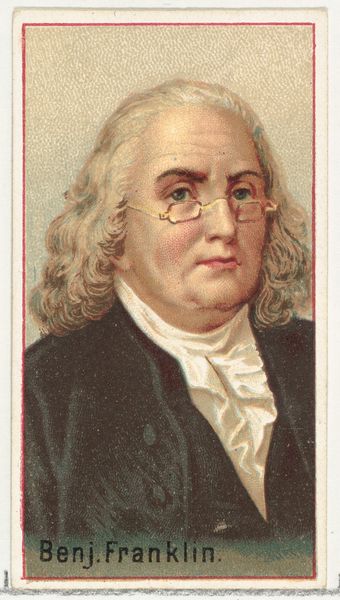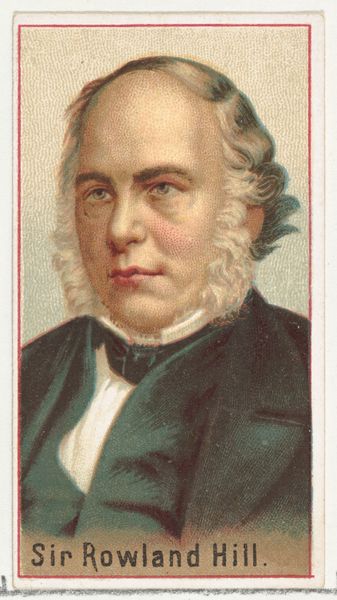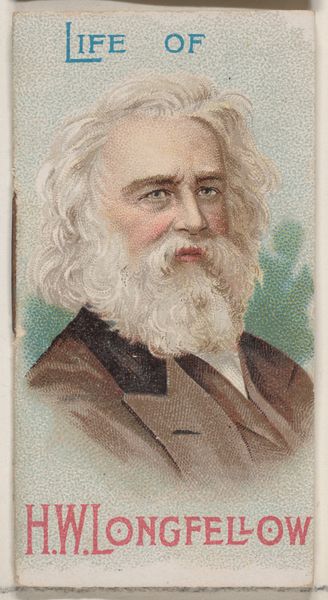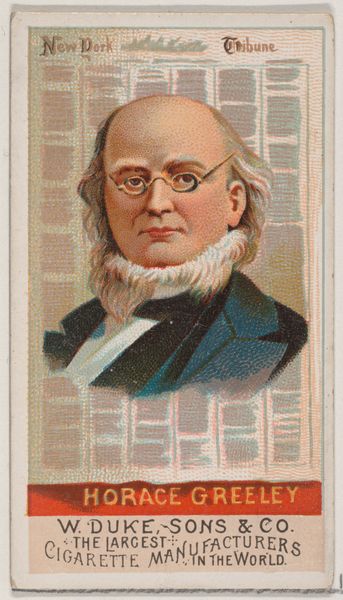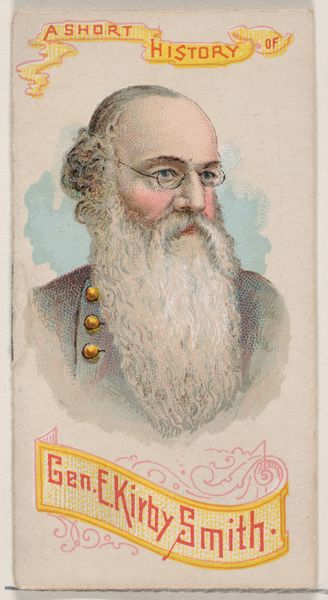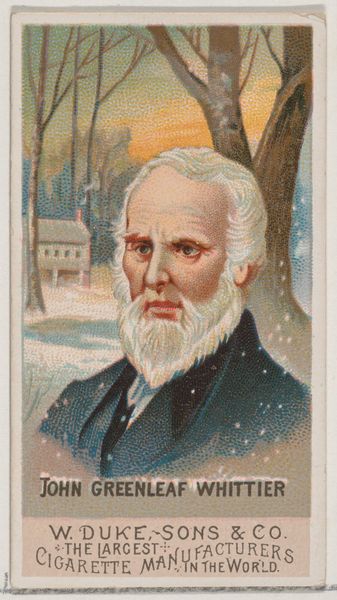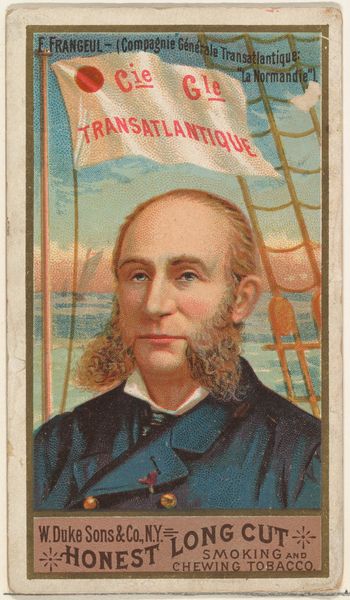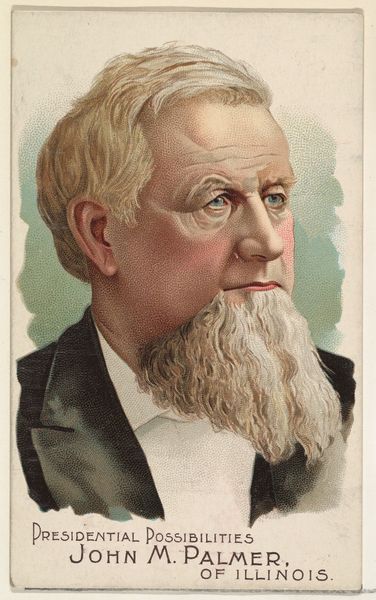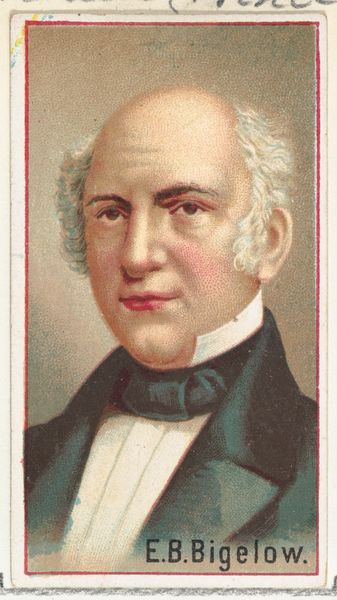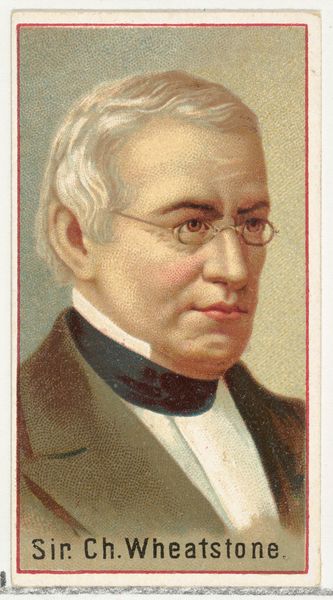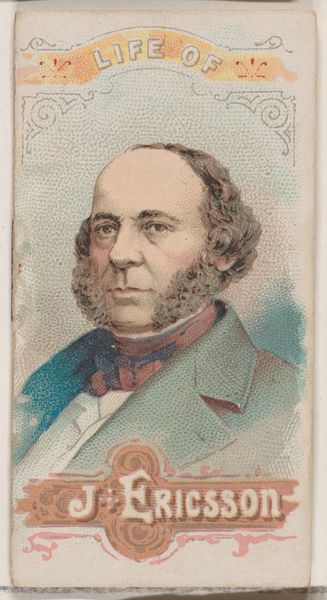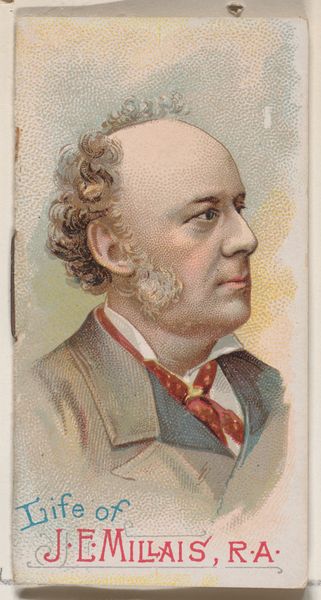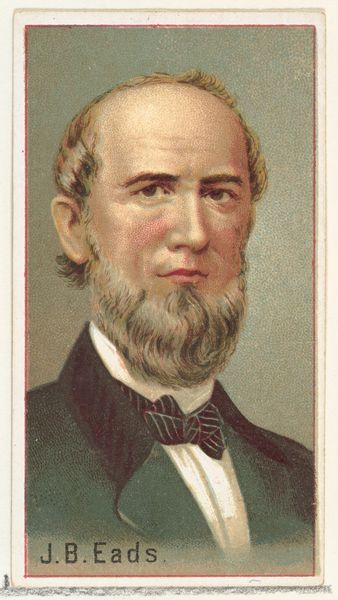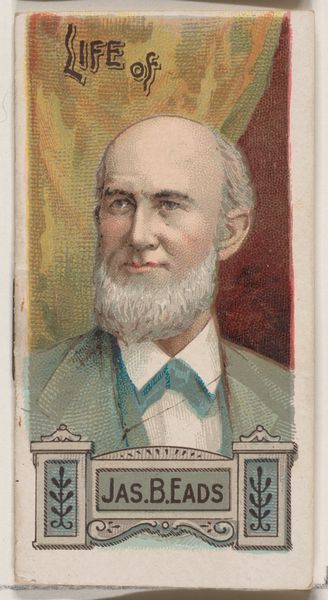
Peter Cooper, from the series Great Americans (N76) for Duke brand cigarettes 1888
0:00
0:00
drawing, coloured-pencil, print
#
portrait
#
drawing
#
coloured-pencil
# print
#
oil painting
#
coloured pencil
#
genre-painting
#
academic-art
#
portrait art
#
realism
Dimensions: Sheet: 2 3/4 × 1 1/2 in. (7 × 3.8 cm)
Copyright: Public Domain
Curator: I find it incredibly charming—like a forgotten keepsake. There's this slightly faded quality that whispers of another time. Editor: Indeed. What we have here is “Peter Cooper, from the series Great Americans” created around 1888 by W. Duke, Sons & Co., famed purveyors of tobacco products. This particular portrait is part of a set of collectable cards, popular promotional items of the time, now held at the Metropolitan Museum. It combines color pencil drawing and print work. Curator: I hadn't realized it was part of a cigarette promotion. It really makes you think about what we choose to immortalize, doesn’t it? What sort of cultural heroes and through which venues do we champion our idols? Editor: Quite right. Consider the composition. We have the portrait, set against a pale rendering of an imposing institutional building and it's carefully designed to convey both authority and progress. Cooper, a 19th century industrialist and philanthropist, is foregrounded to appear both prominent and trustworthy, aided of course by the textual reinforcement printed on the card. Curator: It’s so quaint, the way they printed his name and all of Duke's marketing information in the foreground—claiming to be "the largest cigarette manufacturer in the world." A humble brag if I've ever seen one. Do you think the cool palette lends some solemnity to this particular portrait, like the past bearing down? Editor: Possibly, though I lean towards the coolness offering a measure of restraint to what is ultimately an exercise in commercial persuasion. The style is quite realist, and that adds a layer of verisimilitude, which undoubtedly serves its marketing objectives well. There's a definite lack of the idealization common in portraiture of the era, wouldn't you agree? Curator: I love how unexpected it all is, really. An imperfect snapshot of a man, an imperfect advertisement, the imperfection makes this infinitely more interesting! It feels like a slice of honest history and forgotten artistry tucked into something as ordinary as a pack of cigarettes. Editor: A collision of commerce and culture, rendered through line, tone, and type—an intersection we often overlook in our analyses of art history. Thank you for the unexpected but enriching experience.
Comments
No comments
Be the first to comment and join the conversation on the ultimate creative platform.
